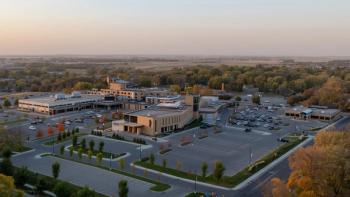
What Rural Health Facilities Need to Survive in 2018 and Beyond
There’s no time like now for rural healthcare providers to consider ways to strengthen their practices.
Halfway through 2018, rural health facilities are seeing lots of new opportunities emerge within the larger national push toward value-based care.
But for most of these organizations, 2018 is also rife with challenges: Recent data published by the Chartis Center for Rural Health revealed
>>
If that weren’t enough, rural health organizations already treat a disproportionately higher number seniors and military veterans than their urban contemporaries. By all accounts, this trend will continue. And by 2050, the number of Americans age 55 and older is projected to reach
All of these high-level factors trickle down to patients and are correlated with an organization’s ability to serve them in the best way possible. The sooner rural health facilities can tackle their operational, clinical, and financial issues, the better off they’ll be long term.
Finishing 2018 with a Bang
While some like to wait until the New Year to make resolutions and improvements, there’s really no time like the present for rural health facilities to consider ways to strengthen their practices.
First, organizations need to take a closer look at how they’re approaching some of the high-level issues—rising patient-care costs (and subsequent patient financial responsibilities), compliance with Promoting Interoperability requirements, and the like—in their day-to-day workflows. Are they working collaboratively with healthcare partners, using the best possible healthcare tools and technology? What does their financial health look like? What are their patients’ clinical outcomes, and what are they doing to elevate care?
Answering questions such as these with rigorous honesty can help organizations see more clearly the areas that need improvement and the goals to prioritize—such as improving clinical pathways for patients with diabetes or tackling financial metrics such as “average days in A/R” and net collections.
While every rural health organization shares similar pain points, the characteristics that define each provider group are different. Some see special-needs patients or serve a large military veteran population, while others are focused on pediatrics or behavioral health.
Once an organization has embraced its priorities, such as improving a particular clinical quality metric or reducing patient no-shows, it can think broadly about what resources are available to address its particular goals.
Let’s say a rural practice sees a high number of seniors with multiple comorbidities who live an hour or more away, by car. The practice may want to consider new ways to engage patients more regularly, such as through CMS’
If, however, a rural facility’s largest pain point is linked with billing and other revenue cycle management (RCM) issues, it may make sense to look at other solutions first, such as the implementation of RCM software that streamlines manual billing processes or mobile applications that make bill payment easier for patients. Workflow changes could produce positive effects as well, such as completing prior authorizations for medical visits before visits to ensure more accurate up front payments (or the payment of bills in full within 30 days).
Whatever rural organizations do, any improvement, no matter how small, is better than none. Addressing 2018’s biggest pain points now key to winning the year—and building a better 2019.
Baha Zeidan is founder and CEO of Azalea Health, changing the way health IT platforms connect community-based healthcare providers and patients across the lifecycle of care.
Get the best insights in healthcare analytics
Related

















































